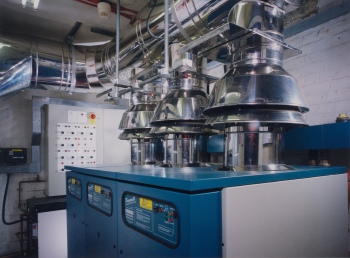Legislation update

Feedback from Hamworthy’s recent series of continuing professional development (CPD) presentations suggests that there is a lack of awareness in our industry about the pending Energy related Products (ErP) Directive. Mark Goodacre of Hamworthy Heating sheds light on what will be changing and the potential impact this will have for specifiers, consultants and contractors.
In the attempt to curtail global warming and save the planet, the UK Government signed up to the Kyoto Protocol in 1997 to reduce greenhouse-gas emissions. Today this means the UK has to slash its current emissions level of 569.9 Mt of CO2 equivalent* by a factor of 3.5 to reach its legally binding target of 160 Mt CO2 equivalent by 2050. The Government has also signed up to the EU’s own targets of a 20% reduction in greenhouse gases by 2020 and, most recently (October 2014), a 40% reduction by 2030, compared to 2005 levels.
With nearly half of the total UK emissions coming from the built environment, the Government decided to attack at the ‘point of build’ by making significant changes to Building Regulations Part L, as well as offering incentives for investment in efficiency-improvement measures. Also, they declared that from 2016 all new homes (and from 2019 all new non-domestic buildings) in England will be built to zero-carbon standards.
In parallel, the European Commission set regulations for energy-using and energy-related products under the title ‘Ecodesign Directive’, which became the ‘Energy-related Products Directive’ (2009/125/EC), and ‘ErP’.
ErP is a framework that has spawned a set of regulations for different product groups, each with a view to reducing these products’ environmental impact by reducing energy usage through their entire life cycle. Only products that comply with these regulations may carry the CE mark and, therefore, be assured to comply with all associated EU health-and-safety and environmental directives. In fact many products, such as boilers, may not legally be sold in the EU without the CE mark.
Therefore, appliances must comply not just on efficiency performance but also on NOx output levels (56 mg/kWh for gas and 120 mg/kWh for oil), the types of electric motors/pumps they use (must be variable speed), noise levels etc.
 |
ErP also aims to help buyers to make informed choices between products on energy-saving grounds, so energy-efficiency labelling will be required on all products to be sold within the EU. Heating and hot-water products, electric motors, and HVAC equipment are amongst the directive’s priorities.
With legislation coming in from two angles, what does this mean?
Part L 2013 (effective April 2014 onwards) aims for a 9% CO2 saving relative to 2010 levels in the non-domestic building mix. To achieve this, it first looks at improvements to the fabric of buildings — using thermal-efficiency improvements for reducing heat loss to cut down the amount of heating required in the first place. It then looks at the performance of heating and hot-water appliances, and sets more stringent efficiency levels than before; e.g., single gas boiler minimum gross seasonal efficiencies are set at 91% — up by 5% from Part L 2010.
ErP (Regulation 813/2013) effectively raises this figure to 92.5% from September 2015 for both new and existing buildings. To reach these levels most projects will require a condensing-boiler solution, and this will probably ring the death knell for atmospheric appliances in the UK market.
Hamworthy stopped selling atmospheric boilers two years ago, and several old favourite high-efficiency boilers will now undergo a phased withdrawal from sale, leaving primarily condensing appliances going forward. Meanwhile, R&D continues apace to ensure that the next generation of appliances keep ahead of any pending regulations.
Part L also encourages the use of renewables for overall CO2 reduction. Our biomass (pellet and woodchip) boilers and solar-thermal product lines launched three years ago are giving specifiers additional options to help them achieve the required ecological goals.
 |
| ErP will probably ring the death knell for atmospheric appliances in the UK boiler market. |
What will this really mean for the building-services industry?
In the short term, there will be those like-for-like refurbishment jobs where we envisage some will be rushing to fit similar atmospheric appliances right up until the September 2015 deadline to save costs by not having to upgrade flue systems, fit condense drain lines etc.
Also, ErP’s 400 kW cut-off point may steer some towards choosing an ErP-exempt solution using a large single boiler rather than a modular multiple-boiler system where each boiler module must be ErP-compliant.
Others will look to the much more compelling argument that by using higher-efficiency ErP-compliant boilers, overall fuel consumption (and consequently carbon emissions) will be significantly reduced.
Crucially, this also means that there will be a proportional reduction in fuel costs — resulting in potentially huge cost savings over the lifetime of the boilers; savings which would easily outweigh the initial investment. And who wouldn’t be interested in that?
Mark Goodacre is marketing executive at Hamworthy Heating.







